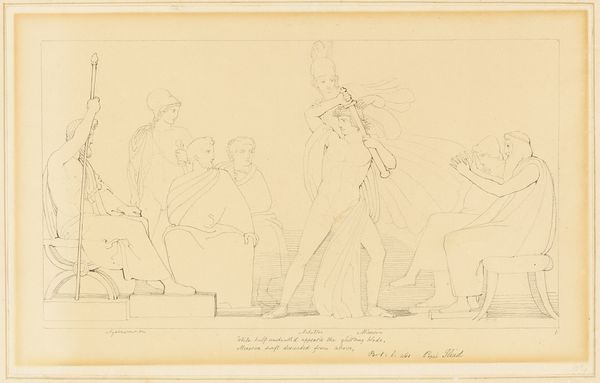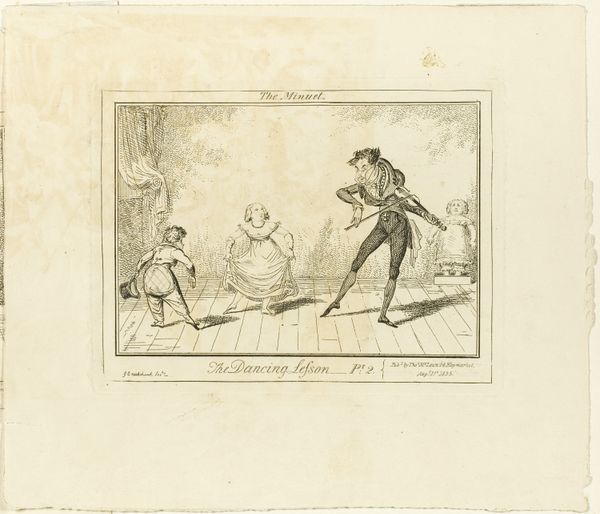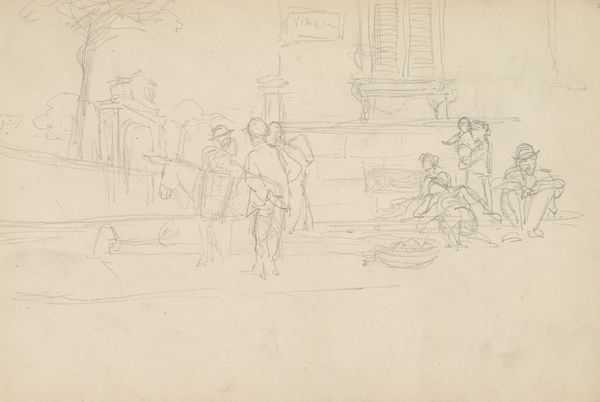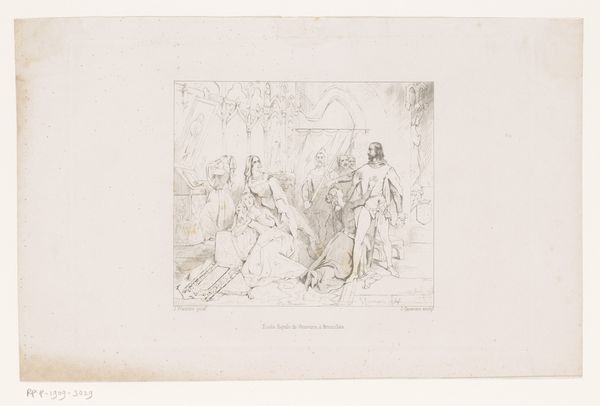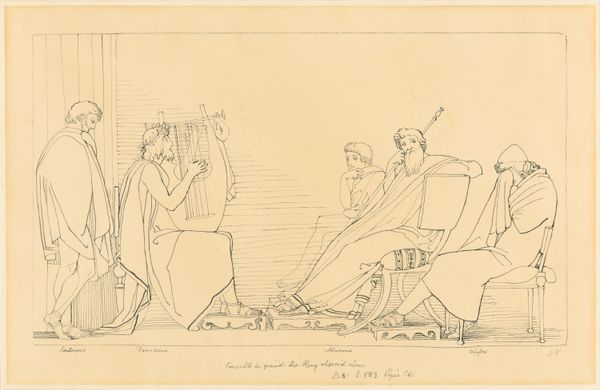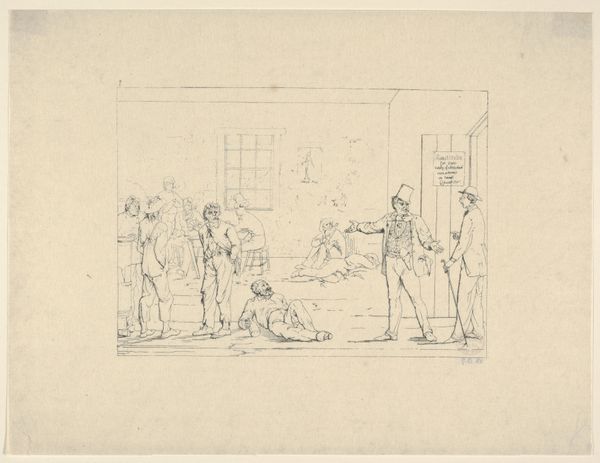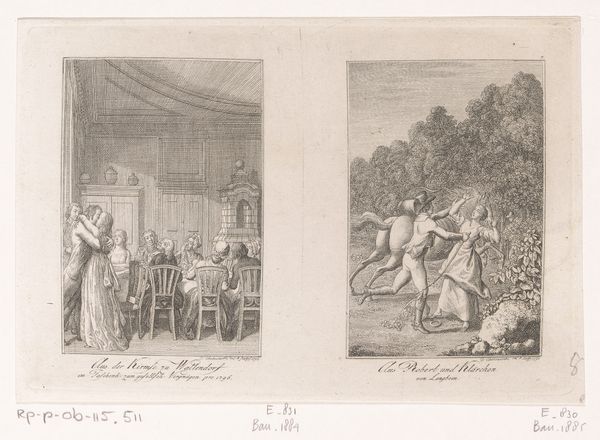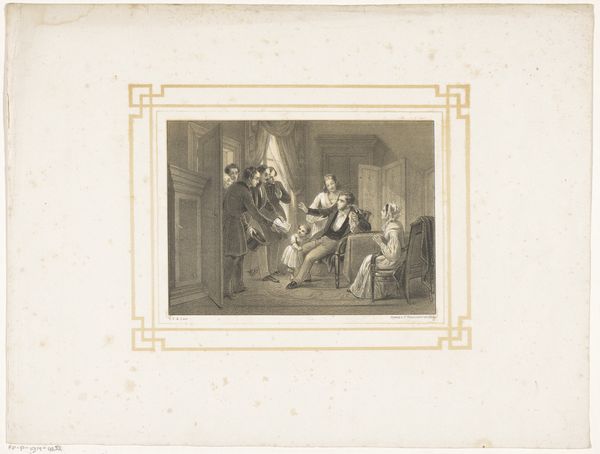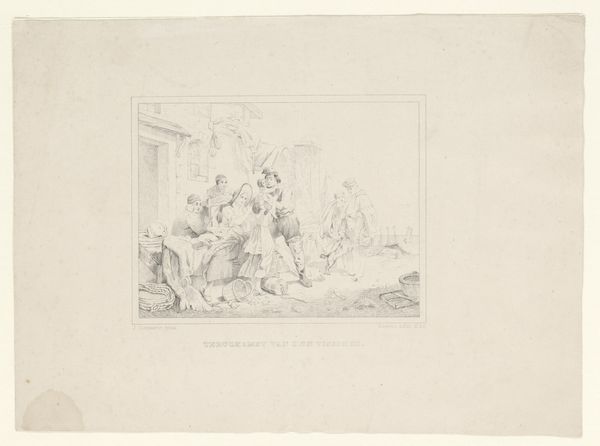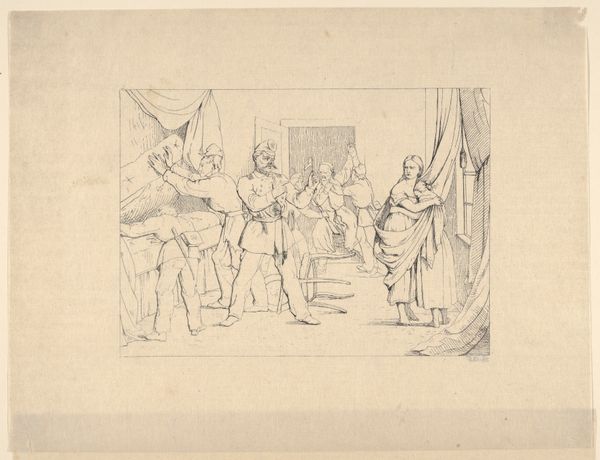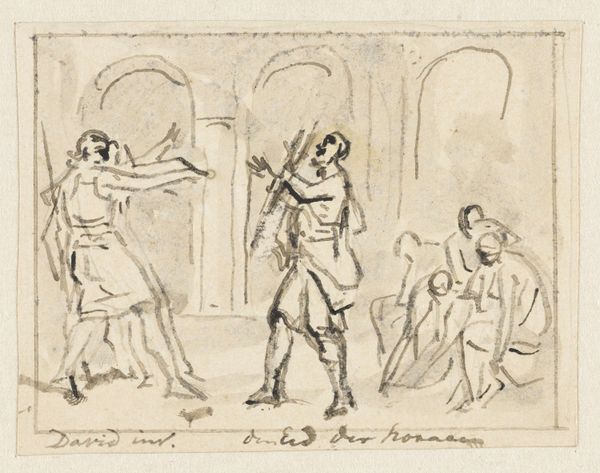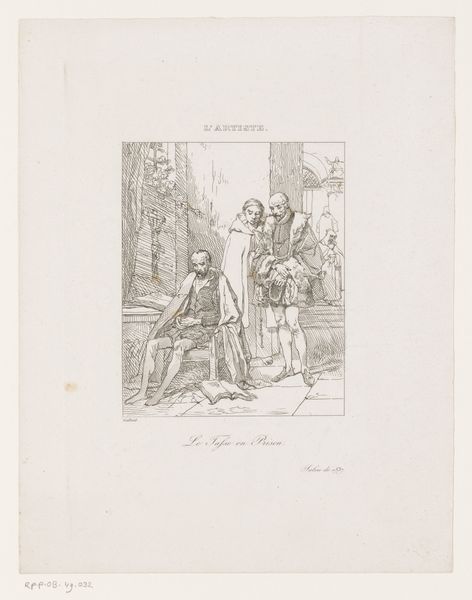
drawing, graphite, pen
#
drawing
#
narrative-art
#
pen illustration
#
old engraving style
#
classical-realism
#
ancient-mediterranean
#
graphite
#
pen
#
history-painting
#
academic-art
Dimensions: height 265 mm, width 440 mm
Copyright: Rijks Museum: Open Domain
Juan Bautista Romero made this line drawing of the enraged Hercules aiming an arrow at Iole in Italy, around the turn of the 19th century. It depicts a violent scene from classical mythology, and the artist makes it seem even more dramatic through the use of stark lines and neoclassical architectural details. This image, like many artworks of its time, shows the influence of the Academy. European art academies promoted classical styles and subjects as the epitome of taste and learning, supporting social norms. Artists often looked to the art of ancient Greece and Rome for models of beauty and heroism. This was particularly true in Italy, where the ruins of antiquity were a constant reminder of past glories. However, Romero also uses the visual language of neoclassicism to explore the darker aspects of human nature. Hercules was known for his strength and courage, but also for his fits of rage. Romero’s image suggests the way that institutions shape our understanding of the classical world, but also their limits. Art historians use period texts to reconstruct the cultural milieu that gave rise to it. In doing so, we gain a richer sense of how artworks can reflect and challenge the values of their time.
Comments
No comments
Be the first to comment and join the conversation on the ultimate creative platform.
